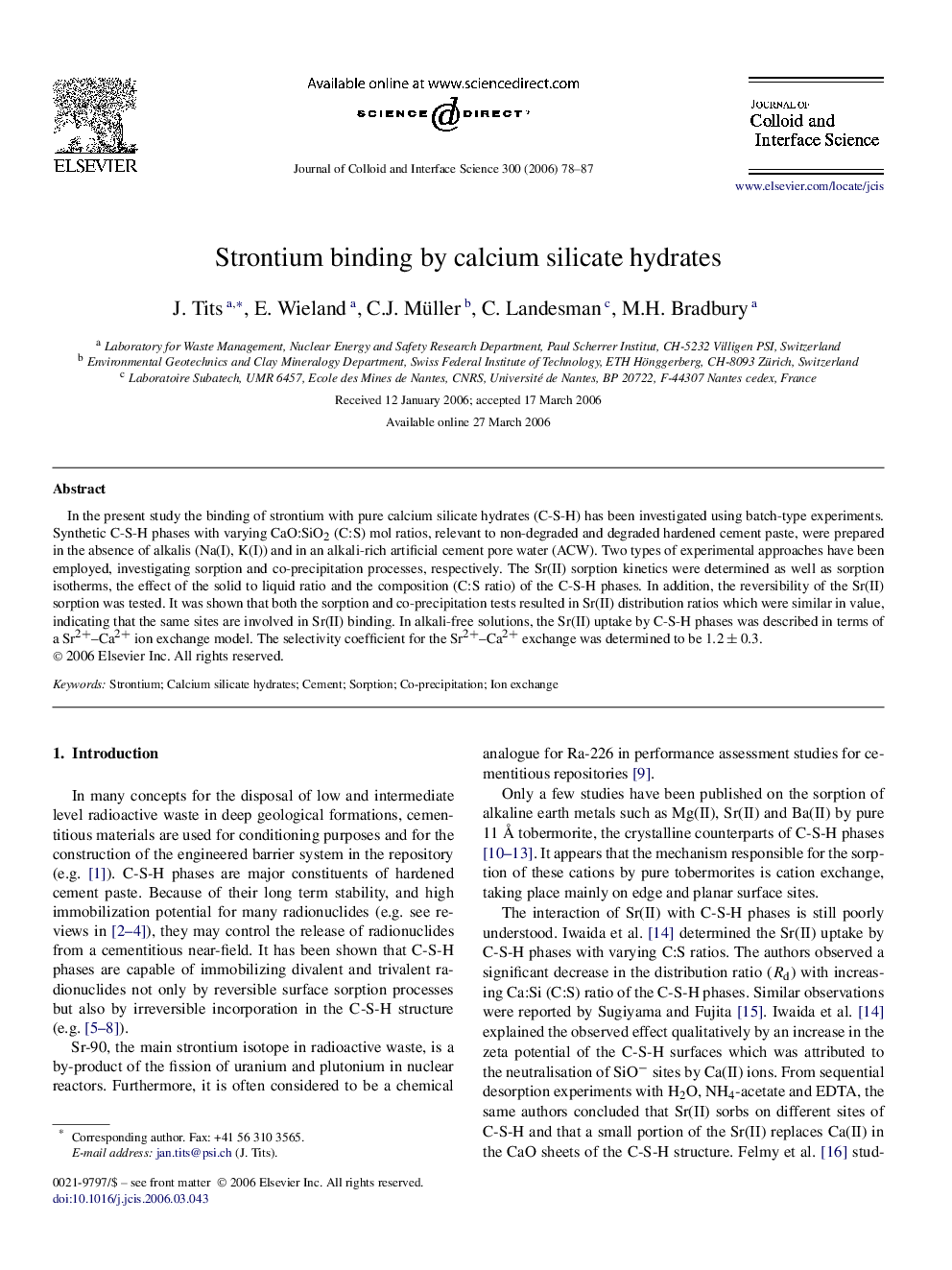| Article ID | Journal | Published Year | Pages | File Type |
|---|---|---|---|---|
| 613547 | Journal of Colloid and Interface Science | 2006 | 10 Pages |
In the present study the binding of strontium with pure calcium silicate hydrates (C-S-H) has been investigated using batch-type experiments. Synthetic C-S-H phases with varying CaO:SiO2 (C:S) mol ratios, relevant to non-degraded and degraded hardened cement paste, were prepared in the absence of alkalis (Na(I), K(I)) and in an alkali-rich artificial cement pore water (ACW). Two types of experimental approaches have been employed, investigating sorption and co-precipitation processes, respectively. The Sr(II) sorption kinetics were determined as well as sorption isotherms, the effect of the solid to liquid ratio and the composition (C:S ratio) of the C-S-H phases. In addition, the reversibility of the Sr(II) sorption was tested. It was shown that both the sorption and co-precipitation tests resulted in Sr(II) distribution ratios which were similar in value, indicating that the same sites are involved in Sr(II) binding. In alkali-free solutions, the Sr(II) uptake by C-S-H phases was described in terms of a Sr2+–Ca2+ ion exchange model. The selectivity coefficient for the Sr2+–Ca2+ exchange was determined to be 1.2±0.31.2±0.3.
Graphical abstractIn this work it has been shown that the sorption of strontium by calcium silicate hydrates (C-S-H) can be described with an ion-exchange model involving the exchange of Ca2+ on silanol sites on the surface of the C-S-H particles for Sr2+.Figure optionsDownload full-size imageDownload as PowerPoint slide
